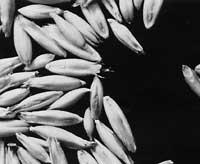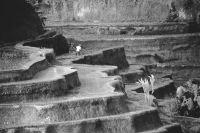The seed of life
2004/11/01 Galarraga Aiestaran, Ana - Elhuyar Zientzia Iturria: Elhuyar aldizkaria

FAO, the Food and Agriculture Organization of the United Nations, has declared 2004 as the year of rice. So far, FAO has never dedicated a year to a single crop, hence the importance of rice.
In fact, in the world, 20% of the energy consumed through food comes from rice, 19% from wheat and 5% from corn. But in some countries it is even more important, it is essential: 70-80% of the calories consumed per day are taken thanks to rice in Laos, Thailand, Vietnam, Cambodia and Bangladesh. In these places, rice is the seed of life and has been planted for centuries.
In fact, in the humid Asian tropics rice cultivation emerged 6,500 years ago. Oryza sativa is a kind of rice capable of growing in dry, humid, hot and cold areas, being able to grow both in saline lands as acidic and alkaline. Therefore, over time, it spread throughout Asia, giving rise to three main subspecies: indica, japonica and javanica . The improvements and crosses made over thousands of years have resulted in a wide variety of varieties grown worldwide.
The other rice species used in agriculture is the Oryza glaberrima. Born in West Africa, in the Niger Delta. Although the cultivation of this type of rice spread to Senegal, it has never been cultivated far from the place of origin. Moreover, Asian varieties are now cultivated in these African lands.
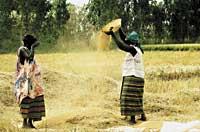
However, in recent years hybrid rice has been imposed among other types of rice. The first hybrid rice was created in 1974 by Chinese scientists. In those years there was a revolution in agriculture, the Green Revolution, which allowed to increase the fertility of the lands by machining and new production systems. The seeds generated in the laboratory contributed to this.
Revolution in the laboratory
According to FAO, hybrid rice provides 15-20% more harvest than other improved seeds. Therefore, in the belief that it is a good weapon to combat hunger, it has granted aid for the planting of this rice in Asia, Africa and South America.
Now, 60% of the total rice produced in the world is produced in China and India, and half of the rice grown in China are hybrid rice varieties. This has allowed to increase the average yield from 3.5 tons per hectare to 6.2 tons in China. However, this type of rice does not all favor. Hybrid rice grains cannot be stored in the next season as they are sterile. Therefore, farmers are required to buy each year.

In addition, hybrid rice planting involves the disappearance of local varieties. FAO itself recognizes that in many cases the results are worse than they should and that there are many reasons for this: technological, cultural, socioeconomic, political...
Genetic engineering has also tried to improve rice. The best known example is golden rice. This rice is genetically modified to increase its content in vitamin A and iron. Thus, in countries based on rice, it is intended that children do not have vitamin A deficiencies, since in these countries the blindness caused by the lack of this vitamin is quite common.
Among the new types created by laboratories in recent years are hypoallergenic rice, especially NERICA rice, which has been created for Africa. FAO considers it essential to use all biotechnologies and scientific advances to improve the quality and fertility of rice for the benefit of developing countries.
Endangered rice ecosystems
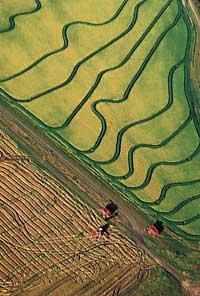
Most rice paddies are found in the water and are home to many wild species: fish, birds, reptiles, crustaceans, insects, plants... live in wet rice fields, many of them used to eat, raise or cure. There are ecosystems with more than a hundred useful species that are safe for crop losses or times of hunger. At the same time, the balance between species prevents pests and diseases.
In many places the rice plantation is accompanied by the breeding of fish and ducks, the straw of the rice plant is used to feed livestock and livestock helps fertilize and prepare the land. Rice is also cultivated along with other plants, such as coconut and banana, thus increasing the resources provided by a single plantation.
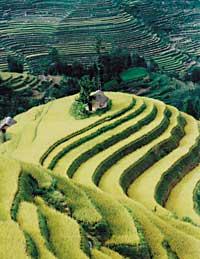
Also, in some places in Asia, rice is grown on terraces. Thanks to this, land is available for cultivation, but also erosion, landslides and flood control are avoided. In addition, the terraces facilitate the accumulation of organic matter and reduce the growth of algae. On the other hand, its landscape and cultural value is enormous, so UNESCO has declared the terraces of Banawe of the Philippines heritage of all people.
However, the intensive production system has endangered traditional systems. As a result, in many places these habitats and ecosystems are disappearing and the environment is being polluted by chemical fertilizers and pesticides. Perhaps the time has come to analyze the situation and take preventive measures.

Gai honi buruzko eduki gehiago
Elhuyarrek garatutako teknologia





